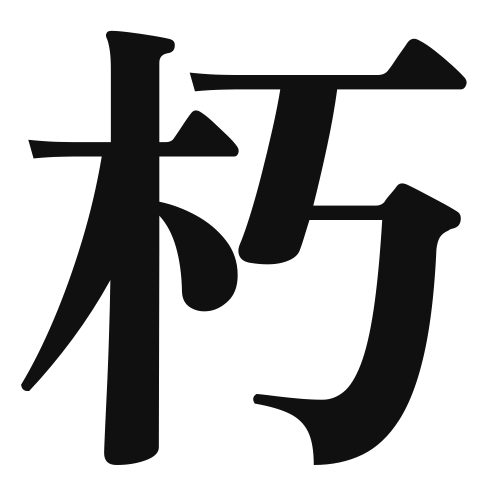1. Overview of Meaning
The kanji “朽” (ku) means “to decay” or “to rot.” It refers to the process of decomposition, often associated with organic matter such as wood or plants. This character conveys the idea of deterioration over time.
2. Formation and Radical
Formation of the Kanji: The kanji “朽” is a compound character (会意文字) that combines elements representing wood and the concept of decay. The left part “木” (tree) indicates that it relates to something organic, while the right part suggests the action of rotting.
Radical: The radical of “朽” is “木” (tree), which is commonly associated with characters related to plants, trees, and wood.
3. Examples of Usage
Common Words and Phrases:
- 朽ちる (kuchiru) – to decay, to rot
- 朽木 (kuchiki) – decayed wood
Example Sentences in Daily Conversation:
- この木は長い間放置されていたので、朽ちてしまった。
- (This tree has been left unattended for a long time, so it has rotted.)
4. Synonyms and Antonyms
Similar Kanji:
- 腐 (fu) – to rot, to decay (often used for food or organic matter)
- 朽 and 腐 both refer to decay, but “腐” is more commonly used for food items, while “朽” is used for wood and plants.
Antonyms:
- 生 (sei) – life, living (indicating vitality and freshness)
5. Cultural and Historical Background
Relation to Japanese Culture: The concept of decay is significant in Japanese culture, often reflecting the transient nature of life, as seen in the appreciation of cherry blossoms (sakura) that bloom beautifully but fall quickly.
Proverbs and Idioms:
- 「朽ちることは避けられない」(Kuchiru koto wa sakerarenai) – “Decay is unavoidable,” emphasizing the inevitability of change and the passage of time.
